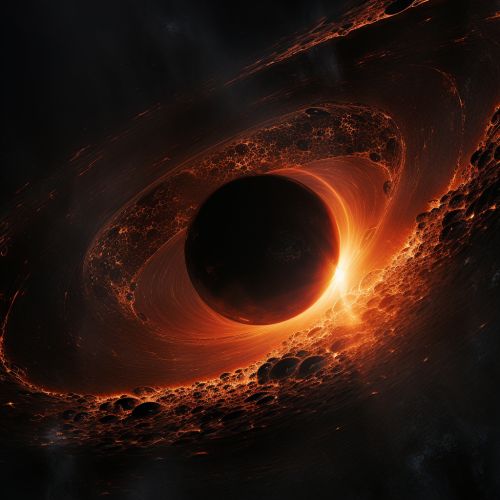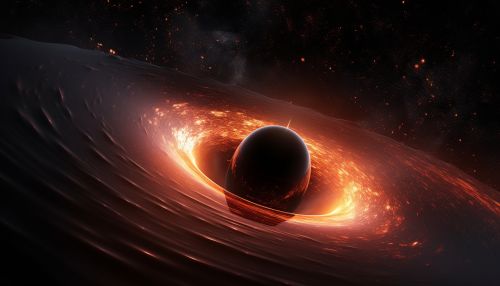The Physics of Black Holes
Introduction
A black hole is a region of spacetime exhibiting gravitational acceleration so strong that nothing—no particles or even electromagnetic radiation such as light—can escape from it. The theory of general relativity predicts that a sufficiently compact mass can deform spacetime to form a black hole.
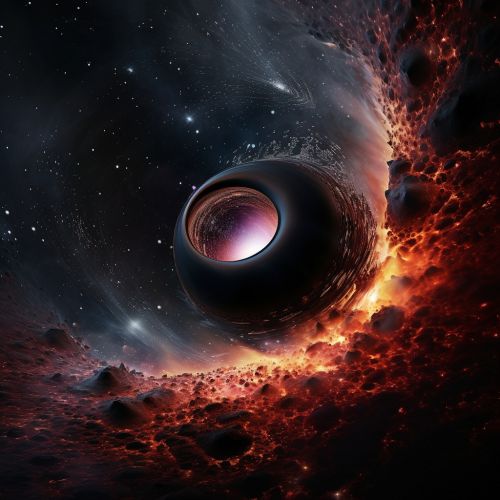
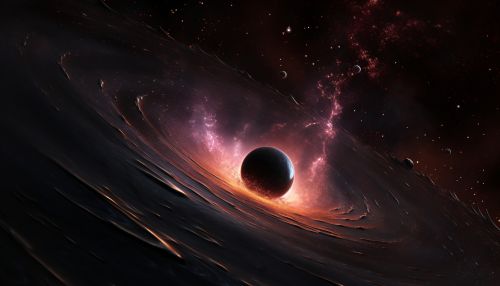
History
The idea of a body so massive that even light could not escape was first proposed by English geologist John Michell in a letter written to Henry Cavendish in 1783. The term "black hole" was coined many years later in 1967 by American astronomer John Wheeler.
Formation
Black holes are formed from the remnants of large stars following a supernova explosion. When a star has exhausted the nuclear fuel in its core, it collapses under its own gravitational pull, leading to a supernova explosion. If the core remaining after the explosion is more than about three times the mass of the sun, the force of gravity overwhelms all other forces and produces a black hole.
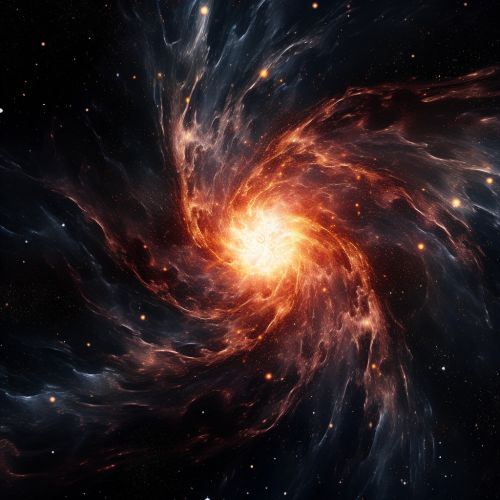
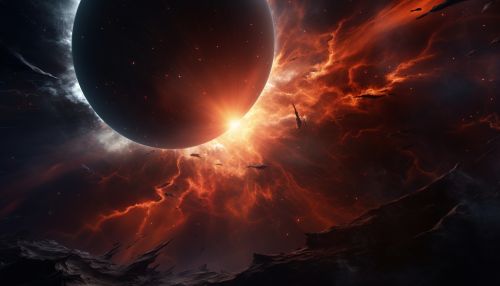
Structure
A black hole is defined by the presence of a singularity, a point at which curvature of spacetime becomes infinite. Surrounding the singularity is the event horizon, a boundary in spacetime through which matter and light can only pass inward towards the mass of the black hole.
Types of Black Holes
There are three types of black holes: stellar black holes, intermediate black holes, and supermassive black holes.
Stellar Black Holes
Stellar black holes are formed by the gravitational collapse of a single massive star. They have masses ranging from about 5 to several tens of solar masses.
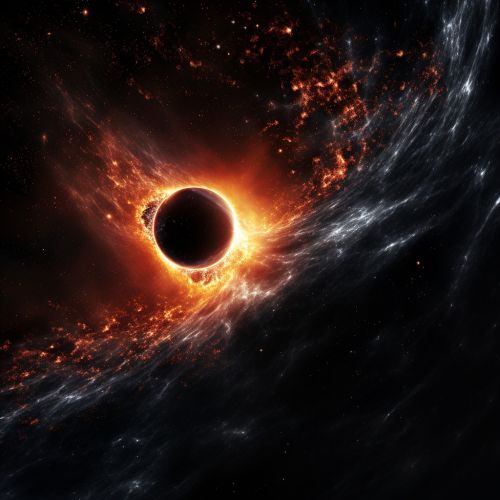
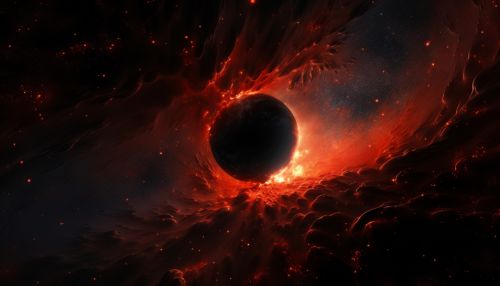
Intermediate Black Holes
Intermediate black holes are thought to form from the merger of smaller, stellar-mass black holes, or in the core of dense star clusters. They have masses ranging from several hundred to several hundred thousand solar masses.
Supermassive Black Holes
Supermassive black holes are the largest type of black hole. They are found in the centers of most galaxies, including our own Milky Way. They have masses ranging from millions to billions of solar masses.
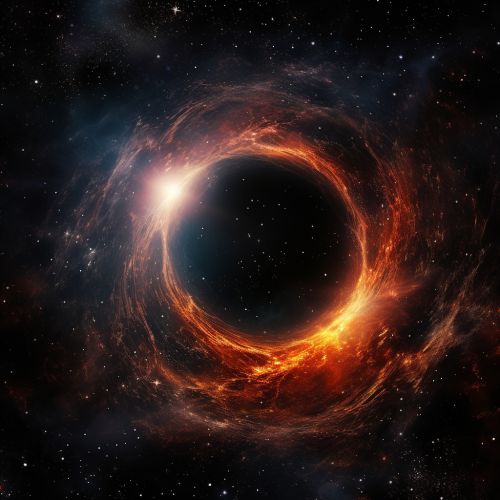
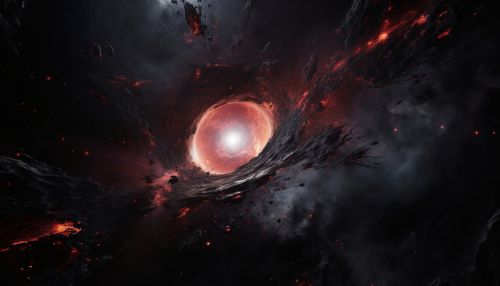
Properties
Black holes have only three observable properties: mass, spin, and electric charge. This is often summarized by the phrase "black holes have no hair", coined by John Wheeler.
Mass
The mass of a black hole determines the size of the event horizon and the strength of the gravitational field outside the black hole.
Spin
Black holes can rotate, and the rotation is characterized by a dimensionless spin parameter. If the spin parameter is maximal, the black hole is said to be an extremal black hole.
Electric Charge
In theory, black holes can have electric charge. However, in practice, isolated black holes are expected to be nearly neutral, because a charged black hole would attract oppositely charged matter from its surroundings until it is neutralized.
Effects on Surrounding Matter
Black holes affect their surroundings in several ways. They can accrete matter from their surroundings, forming an accretion disk. The matter in the disk is heated to very high temperatures by friction, causing it to emit X-rays.
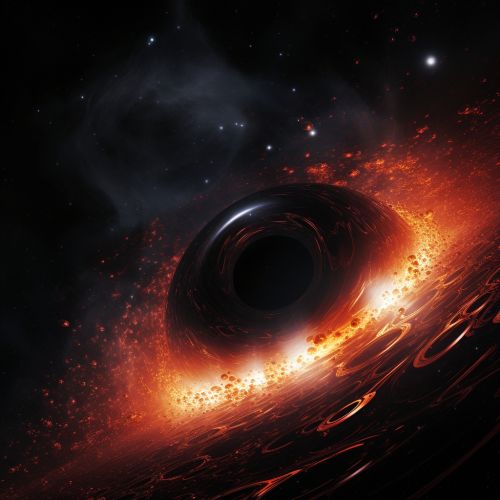
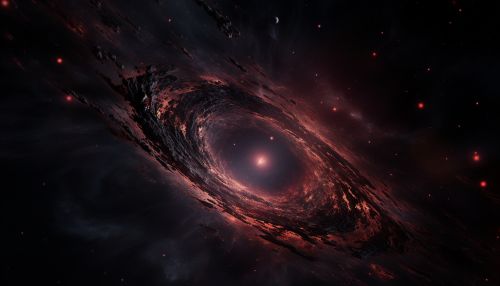
Detection and Observation
Black holes themselves are invisible, as no light can escape from them. However, they can be detected by their effects on nearby matter. For example, if a black hole passes through a cloud of interstellar matter, it can form an accretion disk, which is visible in X-rays.
Black Holes and Quantum Mechanics
The study of black holes has led to important developments in quantum mechanics. In particular, the discovery of Hawking radiation by physicist Stephen Hawking in 1974 showed that black holes can slowly lose mass and eventually evaporate completely. This is due to quantum effects near the event horizon.
